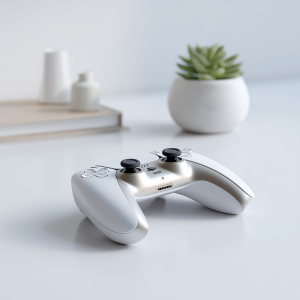Ever feel like your workday is a never-ending to-do list without much structure? Optimizing break schedules with the Pomodoro Technique could be the turning point against mental fatigue. By working in strategic bursts and recharging with short, well-timed breaks, you’ll boost focus and reduce burnout.
According to one time management study, time blocking recovers 2.1 hours daily by minimizing context-switching [Source: https://www.timealignapp.com/blog/top-time-management-trends-in-2025]. When you pair that principle with carefully planned breaks, you’re setting yourself up for success.
Key Takeaways
- The Pomodoro Technique balances work sprints and regular breaks.
- Short, frequent breaks help keep mental energy high.
- Task intensity should dictate how long each work interval lasts.
- Tracking post-break performance reveals what works best.
- Flexibility is essential—adapt break lengths to your personal needs.
Why Do Scheduled Breaks Boost Overall Productivity?
Structured breaks are not just for relaxation; they’re a strategy to maintain optimal focus. Short intervals of downtime can refresh your mind and prevent the slump that comes from nonstop work. This approach helps you tackle tasks with sharper clarity and fewer errors.
What Is the Role of Breaks in Sustaining Focus?
- Refresh Mental Energy: Brief breaks help your brain recover, reducing mistakes that come from fatigue.
- Improve Decision-Making: A mental pause gives you perspective on what truly matters next.
- Boost Creativity: Some of the best ideas emerge when you step away from a problem.
“Think of your mind as a rechargeable battery—it needs consistent breaks to function at its best.”
If you’re interested in broader time management techniques, explore our Time Management Techniques page for more tips.
How to Optimize Work-Break Intervals Step by Step
1. Adapt Pomodoro Intervals to Task Intensity
Not all tasks demand the same mental energy. High-intensity work such as coding or creative writing might call for shorter sprints with stricter, frequent breaks. Lower-intensity tasks could allow for longer work intervals before you pause.
| Task Type | Work Interval | Break Duration |
|---|---|---|
| High-Intensity | 25 minutes | 5 minutes |
| Low-Intensity | 40 minutes | 5–10 minutes |
| Creative Work | 20 minutes | 10 minutes |
2. Personalize Your Break Durations
Your breaks should reflect your current energy levels. Try short 3–5 minute microbreaks to stretch or grab water. Every few cycles, give yourself a longer 15–30 minute break to fully recharge. If you’re in a flow state, keep the break quick so you don’t lose momentum.
Tip: Consider sprinkling in mindful activities during longer breaks. For ideas, see our Mindfulness Breaks guide.
Measuring Break Effectiveness
It’s crucial to see if your breaks are actually helping you.
- Focus Levels: Do you come back feeling mentally sharper?
- Task Completion Rates: Compare how many tasks you get done with vs. without breaks.
- Energy Check-Ins: If you’re drained, you might need longer breaks or a different pattern.
| Metric | Before Break | After Break |
|---|---|---|
| Tasks Completed | 2 | 3 |
| Focus Duration | 20 min | 30 min |
| Energy Level (1–10) | 5 | 8 |
“Breaks aren’t just downtime—they’re essential for refreshing your mind.”
To explore more ways to gauge productivity, read our post on Managing Energy for Productivity.
Pros and Cons of Optimized Breaks
Pros
- Prevents Fatigue: Regular mini-pauses keep you from hitting a midday wall.
- Better Focus: You’ll feel more alert after stepping away, even briefly.
- Physical Health: Moving around helps counteract the effects of sitting too long.
Cons
- Flow Disruption: If you’re deep in concentration, frequent breaks could interrupt that zone.
- Personal Preference: Some prefer tight scheduling; others find it stifling. Tweak the technique to suit your own style.
“The best break schedule is the one that aligns with your workflow and well-being.”
Feel free to combine break scheduling with other time-saving strategies like Timeboxing for Focus.
Applying Pomodoro in Real-Life Scenarios
- Remote Worker with ADHD: Shorter intervals (e.g., 15–20 minutes) can help maintain focus, plus more frequent breaks to manage energy dips.
- Busy Parent: Fitting in 25-minute sessions while a toddler naps can create a predictable work rhythm, followed by quick breaks to handle household tasks.
- Office-Based Professional: If your environment is full of interruptions, a standard 25/5 Pomodoro might help preserve your sanity and keep tasks flowing.
Check out Microbreaks for more insights on effective quick breaks.
Wrapping It Up
Optimizing break schedules with the Pomodoro Technique is more than a trendy hack—it’s a sustainable way to keep your energy stable and your mind sharp. By customizing work intervals to fit your tasks and using data to measure effectiveness, you’ll find a rhythm that not only boosts productivity but also preserves your well-being. If you’re looking to go even deeper, see our Productivity Strategies for more comprehensive methods.
“The real objective isn’t to work endlessly—it’s to work effectively while staying healthy and motivated.”
Frequently Asked Questions
- What is the Pomodoro Technique?
It’s a time management method using fixed work intervals (e.g., 25 minutes) followed by short breaks. - How do breaks improve productivity?
They restore mental energy and help you re-enter tasks with fresh focus. - Can I change the Pomodoro intervals?
Absolutely—adapt them based on task intensity or personal preference. Some people do 50 minutes on, 10 minutes off. - What should I do during breaks?
Stretch, get some water, or simply rest your eyes. Longer breaks might include a walk or mindfulness activity. - How do I measure if my breaks are effective?
Note how quickly you can refocus after a break and whether your output improves. - Any tools to help with Pomodoro?
Yes, apps like Focus Keeper or TomatoTimer provide easy timers and stats. - Benefits of the Pomodoro Technique?
Better time awareness, reduced burnout, and enhanced focus are top advantages. - Does this work for group tasks?
Definitely! You can align intervals in teams, then use group breaks for quick check-ins.
For more insights on purposeful time management, you can also read about Deep Work Sessions.









